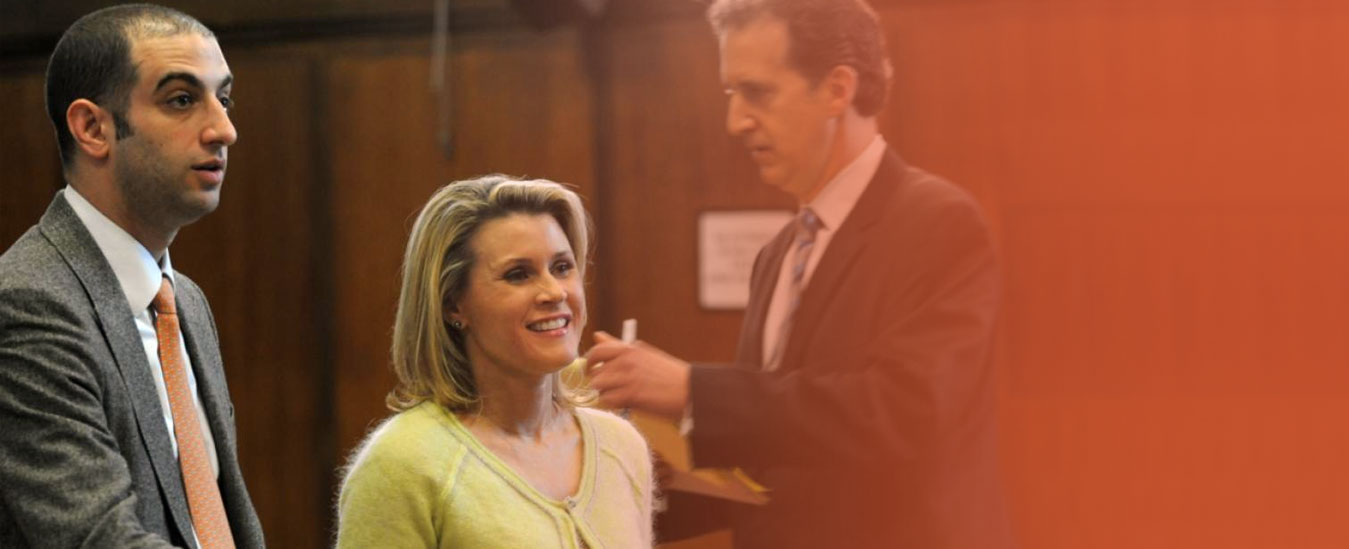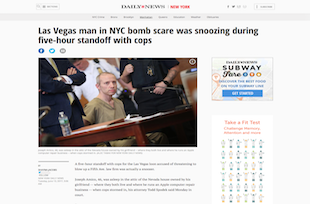Voluntary Manslaughter – 18 U.S.C. § 1112 Sentencing Guidelines
Voluntary Manslaughter – 18 U.S.C. § 1112 Sentencing Guidelines
Thanks for visiting Spodek Law Group, a second-generation firm managed by Todd Spodek with over 40 years of combined experience defending clients against federal homicide charges. When federal prosecutors charge voluntary manslaughter under 18 U.S.C. § 1112, they’re acknowledging that human emotion—rage, fear, passion—played a role in the killing. That acknowledgment matters constitutionally and practically. It’s the difference between 7-9 years in prison and life imprisonment.
This article explains how voluntary manslaughter sentencing works under current federal guidelines, why the “heat of passion” distinction reduces sentences so dramatically, and how defense attorneys prove the elements that transform murder charges into manslaughter convictions.
What Makes Manslaughter “Voluntary”: The Heat of Passion Standard
Federal law defines voluntary manslaughter as the unlawful killing of a human being “upon a sudden quarrel or heat of passion.” That phrase carries centuries of common law tradition recognizing that killings committed in the grip of overwhelming emotion—provoked by the victim’s conduct—deserve less severe punishment than calculated murder.
Consider the classic scenario. A husband discovers his spouse in bed with another person, and in that moment—flooded with rage and betrayal—kills one or both. That’s voluntary manslaughter, not murder. The law doesn’t excuse the killing, but it acknowledges that human beings confronted with extreme provocation sometimes act without the deliberate malice murder requires. The passion must be sudden (no cooling-off period) and the provocation adequate (judged by what would cause a reasonable person to lose self-control).
This isn’t about every argument or insult justifying violence. The provocation must be serious—actual violence, witnessing a serious crime against a family member, discovering infidelity. Words alone rarely suffice, though threats combined with aggressive action might. Courts evaluate whether the defendant actually experienced heat of passion (subjective test) and whether a reasonable person similarly situated would have lost self-control (objective test). Both elements must be present.
Distinguishing Voluntary Manslaughter from Murder
The line between voluntary manslaughter and second-degree murder is thin but consequential. Second-degree murder requires malice aforethought—intentional killing without premeditation. Voluntary manslaughter involves intentional killing too, but the heat of passion negates the malice element. Both lack premeditation, but manslaughter includes provocation that explains (though doesn’t justify) the defendant’s loss of control.
Here’s why this matters practically. Second-degree murder under §2A1.2 carries a base offense level of 38—roughly 19-24 years at sentencing. Voluntary manslaughter under §2A1.3 carries a base offense level of 29—roughly 7-9 years. That’s a 12-15 year difference, all hinging on whether prosecutors believe and can prove the defendant acted in heat of passion.
The cooling-off doctrine becomes critical. If substantial time passes between provocation and killing—enough time for a reasonable person to regain composure—voluntary manslaughter doesn’t apply. Walking away from a confrontation, going home, retrieving a weapon, and returning suggests deliberation, not passion. But acting immediately in the heat of the moment? That’s manslaughter, assuming adequate provocation existed.
Federal Sentencing Guidelines: Offense Level 29
Under §2A1.3 of the Federal Sentencing Guidelines, voluntary manslaughter receives a base offense level of 29. This wasn’t always the case—until Amendment 663 in 2004, the base level stood at 25 (yielding sentences of 57-71 months). The Sentencing Commission raised it to 29, aiming for longer baseline sentences while still maintaining significant distance from murder’s offense levels.
What does offense level 29 mean? At Criminal History Category I (minimal or no prior record), the guideline range runs 87-108 months—roughly 7.25 to 9 years. That’s before acceptance of responsibility adjustments. Plead guilty and demonstrate genuine remorse? Subtract three levels, dropping to offense level 26 (63-78 months, or roughly 5-6.5 years).
As criminal history increases, so do the ranges. Category II yields 97-121 months, Category III brings 108-135 months, Category IV reaches 121-151 months. Categories V and VI push sentences to 140-175 months and 168-210 months respectively—still dramatically less than the 235-293 months (minimum) second-degree murder carries.
The statutory maximum for voluntary manslaughter is 15 years (180 months), increased from 10 years in 2008. Even Category VI defendants with extensive criminal histories face sentences capped at 15 years—a finite term, not life imprisonment.
No Specific Offense Characteristics
Like murder guidelines, §2A1.3 contains no specific offense characteristics to enhance the base level. Once you’re at 29, there’s no subsection (b) enhancements for weapon type, victim vulnerability, or aggravating circumstances—the guideline already accounts for intentional killing mitigated by passion.
General Chapter 3 adjustments still apply: victim-related enhancements if the deceased was a government official, role adjustments in conspiracy cases, obstruction penalties for evidence tampering. But prosecutors can’t pile on offense levels the way they do in economic crimes. The sentencing fight focuses on ensuring the offense is properly categorized as manslaughter rather than murder, and then on applying acceptance of responsibility reductions.
Proving Heat of Passion: Defense Strategy
How do defense attorneys establish heat of passion when prosecutors charge murder? The burden shifts depending on jurisdiction and procedural posture, but functionally, the defense must present enough evidence to raise the issue—then prosecutors must disprove it beyond reasonable doubt or accept manslaughter charges.
First, document the provocation. What did the victim do immediately before the killing? Did they attack the defendant? Threaten family members? Create circumstances that would cause a reasonable person to lose self-control? Witness testimony, surveillance footage, forensic evidence showing defensive wounds—all support the heat of passion narrative.
Second, demonstrate the lack of cooling-off time. Timeline evidence becomes critical. Minutes between provocation and killing supports manslaughter. Hours or days suggest deliberation, not passion. Cell phone records, witness accounts, and forensic pathology (time of death estimates) establish when events occurred and how quickly the defendant acted.
Third, present evidence of the defendant’s emotional state. Did they immediately break down after the killing, showing remorse and confusion? Did they call 911, remain at the scene, or attempt to help the victim? These actions contradict the cold-blooded malice murder requires. Conversely, fleeing, hiding evidence, or showing no emotion undermines heat of passion claims.
Fourth, explain why a reasonable person would have lost self-control under those circumstances. This isn’t about the defendant’s unique sensitivity—it’s about whether provocation was objectively adequate. Expert testimony can help: psychologists explaining normal emotional responses to betrayal or threat, cultural experts in cases involving honor-based provocations (carefully, as courts scrutinize cultural defenses), evidence showing the defendant had no history of violence suggesting this was aberrational behavior.
Negotiating Voluntary Manslaughter Pleas
Most federal cases resolve through plea agreements. When someone is charged with second-degree murder but facts support voluntary manslaughter, plea negotiations offer both sides value. Prosecutors secure a homicide conviction without trial risk, defendants avoid murder-level sentences—a rational exchange assuming the evidence actually supports manslaughter.
But consider the pressure defendants face. Second-degree murder at offense level 38 means 19+ years minimum. Voluntary manslaughter at offense level 29 (minus three levels for acceptance) means 5-6.5 years. That 13-year difference creates enormous incentive to plead even when heat of passion evidence is strong enough to win at trial. Defense attorneys must evaluate honestly: is this a legitimate manslaughter case, or are prosecutors leveraging murder charges to coerce pleas?
If provocation was genuine, cooling-off time minimal, and reasonable person would have lost control, taking the case to trial might be worth the risk. Federal juries understand human emotion. They know what betrayal, threat, or sudden violence feels like. Presenting a heat of passion defense isn’t admitting guilt and begging for mercy—it’s acknowledging what happened while explaining why it doesn’t constitute murder.
Sentencing Advocacy for Voluntary Manslaughter Convictions
Suppose your client is convicted of or pleads to voluntary manslaughter. How do you minimize the sentence within the guideline range?
First, secure acceptance of responsibility. That three-level reduction (to offense level 26) cuts roughly two years off the sentence. It’s nearly automatic for defendants who plead guilty early, cooperate with the pre-sentence investigation, and demonstrate genuine remorse.
Second, emphasize the victim’s role. While this cuts close to “blaming the victim,” it’s relevant for sentencing. If the deceased initiated the confrontation, threatened violence, or engaged in conduct that provoked the killing, judges may vary from the guideline range downward based on 18 U.S.C. § 3553(a) factors—particularly the need for the sentence to reflect the seriousness of the offense and promote respect for law.
Third, present mitigation evidence. Lack of criminal history, military service, mental health struggles, childhood trauma—these don’t excuse the killing, but they humanize the defendant and demonstrate this was aberrational conduct. Judges have discretion to vary from guidelines when compelling circumstances justify it.
Fourth, propose structured re-entry plans. Where will the defendant live upon release? What employment awaits them? Do they have family support? Judges sentencing someone to 5-7 years (not life) care about rehabilitation prospects. Demonstrating that the defendant will reintegrate successfully reduces recidivism risk and may justify a below-guideline sentence.
Why Spodek Law Group for Federal Manslaughter Defense
Distinguishing voluntary manslaughter from murder requires more than legal knowledge—it demands the ability to present human emotion and provocation in ways judges and juries understand. Todd Spodek built this firm on the principle that defending controversial clients isn’t about approving their conduct; it’s about ensuring the charge matches what actually happened, not what prosecutors assume happened.
We’ve defended clients in high-profile cases where media, prosecutors, and public opinion ran heavily against them. That experience taught us how to present heat of passion defenses without seeming to minimize the victim’s death. It’s a difficult balance: acknowledging the tragedy while explaining why the law recognizes a distinction between murder and manslaughter. We handle that balance through thorough investigation, compelling witness presentation, and expert testimony that contextualizes the defendant’s actions.
If you’re under investigation for or charged with a federal homicide, contact us immediately—especially if the killing occurred during a sudden confrontation or in response to provocation. The charging decision—murder versus manslaughter—often happens before formal charges are filed, and representations made during that window can influence how prosecutors categorize the offense. We’re available 24/7 because voluntary manslaughter cases turn on facts gathered immediately: witness memories fade, surveillance footage gets deleted, and physical evidence deteriorates. Acting fast preserves the evidence that proves heat of passion existed.
The difference between 7 years and 19 years, between manslaughter and murder, between finite imprisonment and life sentences—that difference turns on the quality of defense representation. We ensure prosecutors see the provocation, understand the lack of cooling-off time, and recognize that human beings sometimes act in the grip of emotion they didn’t seek and couldn’t control. That’s not excusing violence. It’s applying the law’s centuries-old recognition that passion, while not justifying killing, mitigates culpability enough to warrant significantly reduced sentences.














NJ CRIMINAL DEFENSE ATTORNEYS